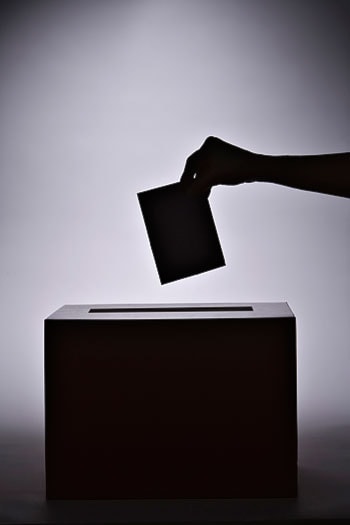Tonight, a group of people are going to meet to discuss ways of making the voting system more fair.
They face an uphill battle.
Generally, majority governments do not provide a healthy environment for electoral reform.
Second, the Yukon Party’s win last night was decisive.
Pulling more than 40 per cent of the popular vote, it won a clear majority of the ballots cast and far more than the second-place NDP, which garnered just 32.5 per cent.
Had it been closer, the calls for reform would have carried more weight.
Nevertheless, there are good reasons to review our electoral system.
Younger democracies have had a chance to design and implement more sophisticated and inclusive voting systems. They simply work better than ours.
But what is the impetus for change?
We’ve been blessed with more than a century of civil peace.
As flawed as it is, there’s been no compelling reason to fix things, apart from the anger of the disgruntled losers.
So the electoral system has remained locked, relatively unchanged, in an 1867 democratic model.
As you might guess, society has changed a little bit since then.
Today, for example, people can communicate with each other without waiting for a mail-laden donkey cart.
And our political leaders conduct campaigns far differently than they did in the days before aircraft or the completion of the Trans-Canada Highway. Or, for that matter, a national railway.
So it is probably beyond time for our voting system to change with the times.
There is no reason for our system to remain static.
It should probably become more sophisticated, reflecting the will of a greater proportion of society.
The trick is to design such a system that is both fair and elegantly simple. Too often, these schemes seem to be designed by math junkies.
Perhaps there is a way to allow voting using our ubiquitous communications lines - to make it easier and faster for people.
Of course, you’d be hard-pressed to find something easier than grabbing a wooden pencil, marking an X and popping the ballot in a box. It is, really, beautifully elegant.
But fewer and fewer people are exercising this right.
In this last election, the voter turnout was an estimated 67 per cent. That’s one of the lowest on record in the territory.
So, there is a case to be made for tweaking the system, making it more relevant to people.
As well, maybe it’s time to update the territory’s vote-tracking system.
Tuesday, our voters lists were handwritten. They weren’t in alphabetical order. There was no identification needed to vote.
The enumeration process missed many people and, as a result, some were prevented from voting.
There were even cases of strangers vouching for each other.
This seems a little sloppy.
Bottom line is that there is plenty of room for improvement across the system.
So, tonight, at Alpine Bakery, a bunch of dedicated people will start discussing the problems and suggesting solutions. The meeting starts at 7:30 p.m.
They argue that, given the small size of the territory, it is the perfect place to start experimenting with fixes to Canada’s first-past-the-post system.
And they are not wrong.
But it won’t be easy to get the government to listen. It will be even harder to get it to hold a referendum prior to the next election.
The problem is the same as it always has been - you’re lobbying people who have just been well rewarded by the existing system.
And, rightly or wrongly, they see systemic reform as a threat.
